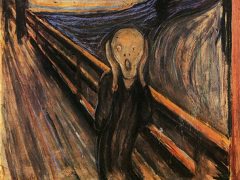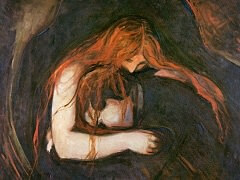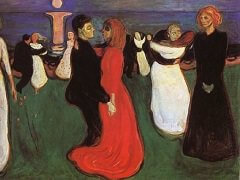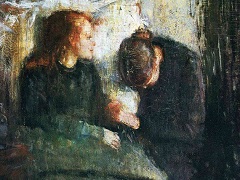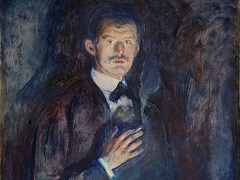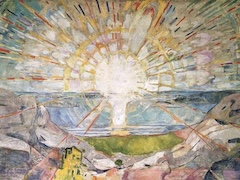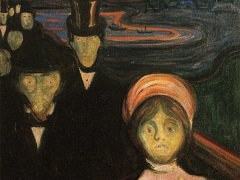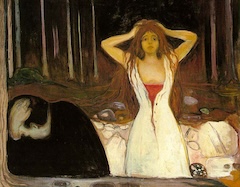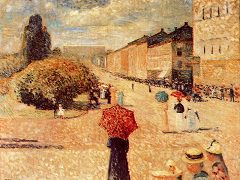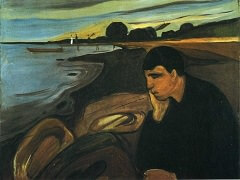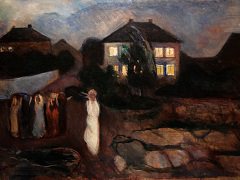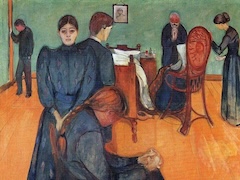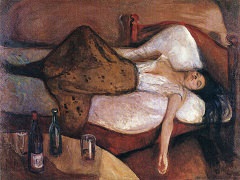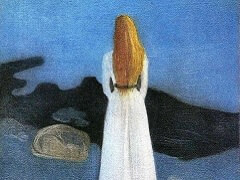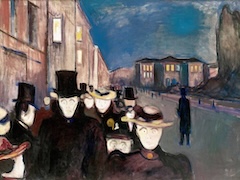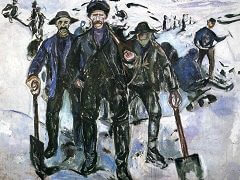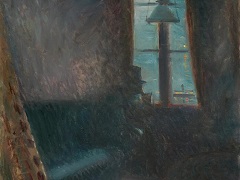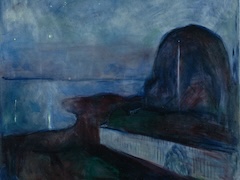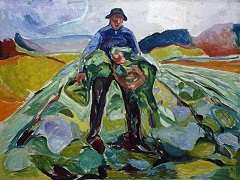Red Virginia Creeper, 1898-1900 by Edvard Munch
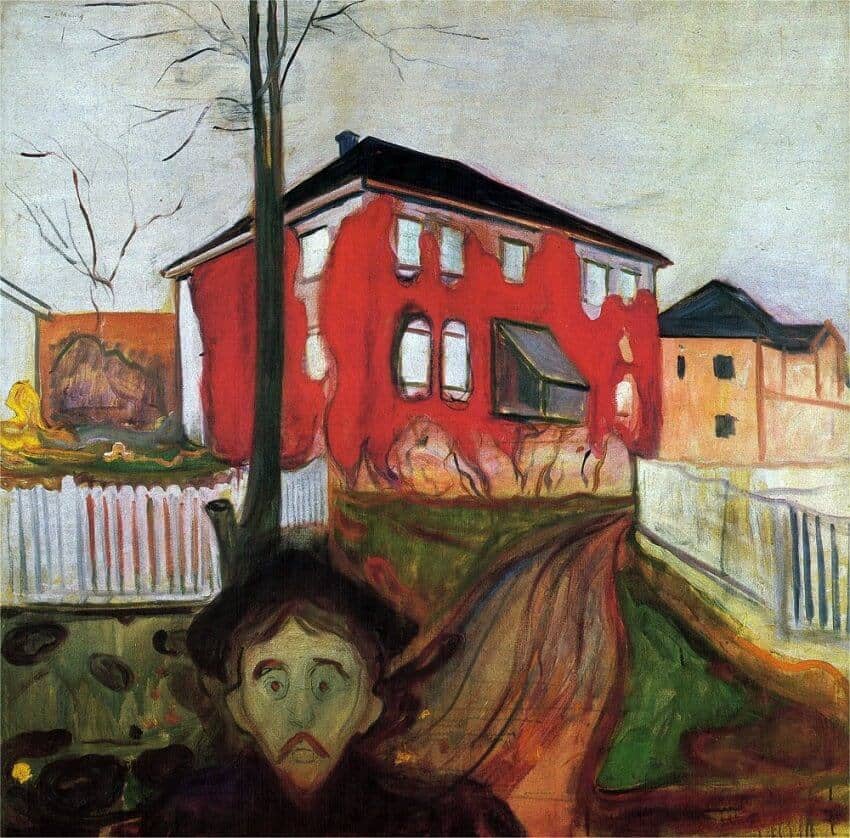
By the end of the century some paintings had begun to show signs of a disintegration of Munch's synthetist art nouveau style. This is a good example. Colors have brightened but the pattern is weakened in places by insufficient value contrast and by indiscriminate mingling of positive and negative lines and of flat and modulated areas of color. Nevertheless it is a powerful conception, the very confusion increasing the disturbing effect. The man strives to escape his frightening vision. His head decapitated by the base line suggests death, matching the barren tree with the stump of a severed branch and the strangulation of the house by a bloody parasite. With red eyes and fearful green-ish face he appears to flee along the winding road toward us, away from whatever menace the house holds for him. As in The Storm, this house is anthropomorphized by a central nose-like element between multiple eyes.
It has been suggested that the scene represents jealousy. Some features do re-semble the Jealousy: the truncated forward-facing figure darkly clad, with features vaguely like Przybyszewski's, and the blood-red in the background. Here is an admittedly fanciful explanation, offered with the excuse that Munch's pictures continually invite speculative interpretations. At the time he painted this picture Munch was having his affair with Tulla Larsen but dreaded the entanglement of marriage (jealousy of her other lovers may have been one of the reasons). The plant encircling the house is a Virginia creeper. This is not a wine grape but a member of the same vine family. Tulla's father was a wealthy wine merchant.

